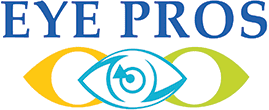Five Early Signs of Cataracts And What To Do
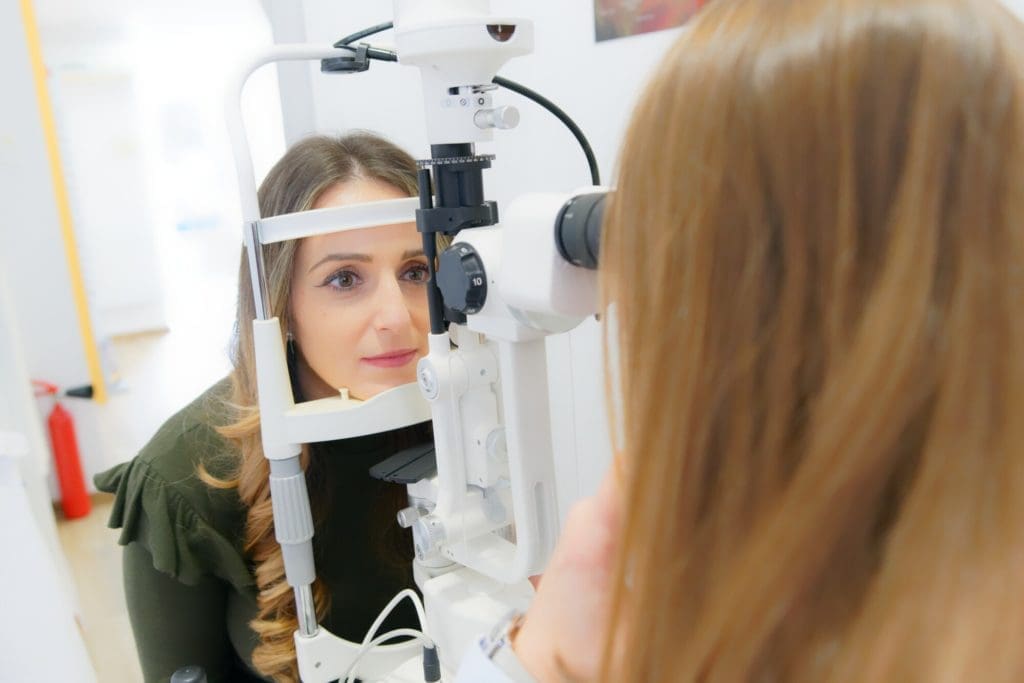
The World Health Organization (WHO) estimates that cataracts cause 51% of blindness in the world. If you have cataracts, it’s important that you get treatment as soon as you can. Cataracts tend to develop slowly but can cause a lot of damage if you don’t get treatment for them. It’s important to watch out for early signs of the condition and to get a professional opinion about them. In this guide, we’ll list the 5 early signs of cataracts and tell you what you can do about them. Understanding Cataracts: Symptoms, Causes, and Treatment Options Early detection is key when it comes to managing cataracts effectively. By catching the condition in its early stages, you can take steps to slow its progression and reduce the risk of serious complications like blindness. If you’re asking, “What can you do about cataracts?”, it’s essential to understand the measures you can take to protect your vision. What Are Cataracts? Cataracts develop gradually over time, making it difficult to notice the changes in your vision at first. However, if left untreated, cataracts can significantly impact your daily activities and even lead to blindness. What is the First Sign of Cataracts? The first sign of cataracts is often blurry vision that cannot be corrected with new glasses or contact lenses. You might notice that your vision is becoming foggy or that colors appear less vibrant. Over time, this blurriness can increase, making everyday tasks such as reading or driving more challenging. Causes of Cataracts There are several causes of cataracts, with age being the most common factor. As you age, the proteins in the lens of your eye can start to break down and clump together, forming a cataract. Other causes include: Exposure to Ultraviolet (UV) Radiation: Prolonged exposure to UV rays from the sun can increase the risk of developing cataracts. Diabetes: High blood sugar levels can lead to the development of cataracts at an earlier age. Smoking and Alcohol Consumption: These habits are linked to a higher risk of cataracts. Eye Injury or Surgery: Previous eye injuries or surgeries can contribute to cataract formation. Genetic Factors: A family history of cataracts can increase your likelihood of developing the condition. Prolonged Use of Steroid Medications: Long-term use of corticosteroids can lead to cataracts. Cataracts typically develop slowly, so you may not notice significant changes in your vision right away. However, if left untreated, cataracts can progress and lead to more severe vision problems, including blindness. Fortunately, cataracts are treatable with a simple and common surgical procedure. Cataract surgery involves replacing the cloudy lens with an artificial one, restoring clear vision. This procedure usually takes around 30 minutes and is highly effective, with most patients experiencing improved vision shortly afterward. Early Signs of Cataracts Cataracts often develop slowly, but recognizing the early signs of cataracts is crucial for timely intervention. Here are the top symptoms to watch out for: 1. Clouded, Blurred, or Dim Vision One of the most common early signs of cataracts is experiencing clouded, blurred, or dim vision. This occurs when proteins in the eye’s lens clump together, causing light to scatter and preventing clear images from forming on the retina. Over time, this cloudiness worsens, making daily activities like reading or driving more challenging. 2. Trouble Seeing at Night As cataracts progress, many people experience trouble seeing at night. Low-light conditions become more difficult to navigate, and you may notice that driving at night becomes increasingly dangerous. This symptom is often accompanied by increased sensitivity to glare. 3. Sensitivity to Light and Glare Sensitivity to light and glare is another early symptom of cataracts. You might find bright lights uncomfortable or even painful, especially when exposed to direct sunlight or headlights. This sensitivity is more pronounced with posterior subcapsular cataracts, which can cause significant discomfort in bright environments. 4. Seeing Halos Around Lights Seeing halos around lights is a common issue for those with cataracts. This visual phenomenon occurs when light entering the eye is scattered by the cloudy lens, creating a halo effect around bright lights, particularly at night. This can interfere with activities like driving after dark. 5. Frequent Changes in Eyeglass or Contact Lens Prescription If you find yourself needing to update your eyeglass or contact lens prescription more frequently than usual, it could be due to the progression of cataracts. Rapid changes in vision often signal that the cataract is advancing, affecting your eyesight significantly. 6. Fading or Yellowing of Colors Cataracts can lead to fading or yellowing of colors, making the world around you appear less vibrant. This occurs as the lens of your eye begins to take on a yellow or brownish tint, which filters out certain colors and diminishes contrast. Over time, this can make it difficult to distinguish between different shades, impacting activities like choosing clothing or interpreting traffic lights. 7. Double Vision in One Eye Experiencing double vision in one eye (diplopia) is another potential early sign of cataracts. This symptom arises when the light entering the eye is split by the cataract, causing you to see two images of a single object. Although double vision can also be caused by other medical conditions, cataracts are a common culprit when it occurs in just one eye. 8.Need for Brighter Light for Reading and Other Activities As cataracts develop, you may find yourself needing brighter light for reading or other close-up tasks. This is because the clouding of the lens reduces the amount of light that reaches the retina, making it harder to see clearly in dim lighting conditions. What to Do If You Notice These Symptoms If you notice any of these early signs of cataracts, it’s important to consult with an eye care professional as soon as possible. Early detection and intervention can help prevent the condition from worsening and preserve your vision. Cataract surgery is a common and effective treatment that can restore clarity to your vision and improve your quality of life. How to Slow Down Cataract Growth While cataract surgery is
See Me Now?: The Different Types of Contact Lenses, Explained
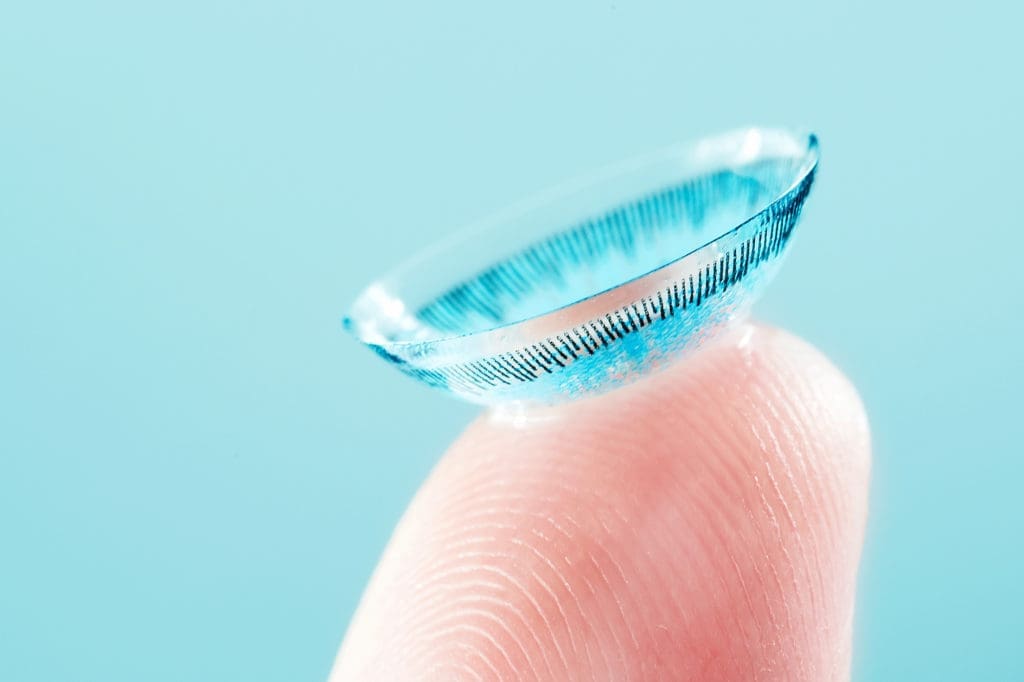
About 79% of adults use some form of vision correction. That’s right, if you need glasses or contact lenses, you’re in the majority! Did you know that there are different types of contact lenses? While your optometrist may not go over all of your options with you, you should be aware of what those options are. We’re here to talk about some of the most common types of contact lenses that are available. Read on to learn more. Soft Contact Lenses Soft contact lenses are the most common contact lenses you’ll find in 2023. Most people who wear contact lenses wear some form of soft contact lenses. These common lenses are made of thin and flexible plastic and they allow air to pass through. Most people find them comfortable enough for all-day wear, though some people find that they start to hurt after several hours. Eye doctors can prescribe soft lenses for the majority of vision problems. They’re safe to use as long as patients follow the instructions of their eye doctors. Many people consider them the best contact lenses. The big issue with soft contact lenses is that they’re easy to break or rip accidentally. Rigid Gas Permeable Contact Lenses Rigid gas permeable contact lenses (RGB lenses) are also sometimes referred to as hard contact lenses. Most people who wear contacts have never encountered hard contact lenses before because soft contact lenses are standard. Hard contact lenses are more durable than soft contact lenses. They’re less likely to rip or tear. They also last longer and may be more affordable in the long run as a result. They’re also more difficult to clean. Soft contact lenses need a quick multipurpose solution rinse. Hard contact lenses need a special solution and cleaning regimen to keep them clean and comfortable. Hard contact lenses often yield better results than soft contact lenses, but it is at the cost of comfort and difficulty with maintenance. Extended-Wear Contact Lenses Extended-wear contact lenses are usually (but not always) soft contact lenses. You can wear them overnight and even for several days at a time. Many eye doctors don’t recommend extended-wear contact lenses because they put wearers at a greater risk of eye infections. That said, if you’re a good patient and your eye are in good health, they may approve the lenses for you. Your eyes will need a break for up to an entire day between extended-wear lenses. Daily Disposable Contact Lenses On the other end of the spectrum are daily disposable contact lenses. These are often the most expensive contact lenses, but they’re also the most comfortable and hygienic. They may be best for people who don’t wear contact lenses every day. These lenses come in packs of 30. They’re incredibly thin and soft. Patients wear these lenses for a single day before throwing them away and replacing them with a new pair. It’s risky to wear a pair of daily disposable lenses more than once. If you can’t commit to switching lenses daily, opt for planned replacement lenses. Planned Replacement Lenses Most people have planned replacement lenses. These are also disposable lenses that you remove every day, but you can wear them more than once. Depending on your eye health and the type of lens you buy, you can wear them for up to thirty days (though some should be replaced every week). Your eye doctor will help you pick the right lenses for you and your lifestyle. These lenses are often soft. You keep them clean in a multipurpose solution when you’re not wearing them. You shouldn’t wear them overnight unless otherwise instructed by your eye doctor. Overnight Orthokeratology Lenses This is a rare type of contact lens. Overnight Orthokeratology lenses are otherwise known as ortho-k lenses. These lenses only go on your eyes at night while you’re sleeping. They can correct minor nearsightedness by temporarily changing the shape of the patient’s eyeball. The patient needs to wear the lenses every night to continue seeing results. If you stop wearing the lenses, you stop getting the benefits. Some patients start to lose vision sometime during the day while others will be fine all day long. If you’re a candidate for ortho-k lenses, your doctor will help you find a wearing schedule that makes sense for your eyes and lifestyle. Toric Lenses Toric lenses are contact lenses for people with astigmatism. That means there’s a problem with the curvature of the eye. Because of that, standard contact lenses won’t work well (or even stay in place). Toric lenses are shaped differently so they can fit unique eye shapes. While people with astigmatism can wear non-toric lenses, they won’t be comfortable and their vision may still be blurry. Decorative or Fashion Lenses Fashion lenses are more popular than ever. While some people get fashion lenses that are also corrective lenses, many people who don’t need vision correction buy them as well. Some of them look natural while others are more unique and best for costumes. Even if you aren’t correcting your vision, it’s always best to talk to an eye doctor before getting decorative lenses. Your eyes are sensitive and low-quality contact lenses could cause problems. Those Are the Types of Contact Lenses There are so many different types of contact lenses! Which ones are right for you? If you’re not sure, the best thing to do is to talk to your eye doctor about your options. At The Eye Pros, our experienced optometrists are ready to help you. Contact us to schedule an appointment so you can start seeing the world clearly.
Contact Lens Cleaner: 5 Steps to Effectively Cleaning Your Lens

Approximately 40-90% of contact lens wearers don’t properly follow care instructions. Serious infections that lead to blindness affect 1 out of every 500 of them every year. One of them, keratitis, leads to 1 million doctor visits a year. Using a contact lens cleaner is the best way to prevent these issues. It’s so important that it’s created a market worth over $2.68 billion with plenty of options to choose from. Read on for 5 steps to finding the right contact lens cleaning solution. 1. Know Your Type of Contact Before trying contacts for the first time, you’ll need to be aware that there are two primary types; hard and soft. Hard lenses are also known as RGP or rigid gas permeable. They’re made of rigid and inflexible materials. They don’t conform to the shape of your eye as easily and can take longer to adjust to. The benefi is that they’re more durable and provide clearer vision. Soft lenses are more flexible and comfortable. They’re also available in daily, weekly, or monthly disposable options. Knowing what type of lens you wear is the first step. They have different cleaning requirements and work best with different solutions. 2. Know the Types of Solutions Once you know what type of contacts you have, you can decide how to clean them. Your primary options include multipurpose, hydrogen peroxide, or enzymatic solutions and contact lens cleaning machines. Multipurpose Cleaners A multipurpose contact lens cleaning solution performs several tasks at once, letting you wash, disinfect, and store them. Rub and rinse solutions are used for disinfecting your lenses. They need to be placed in a sterile container after. Rinse-only contact lens cleaning is meant to be an easier solution because you only have to apply it and rinse your contacts off. It can be helpful, but most optometrists recommended rubbing the solution on anyway. Hydrogen Peroxide Solutions This type of contact lens cleaning solution suspends hydrogen peroxide in sterile saline. It’s more effective at disinfecting your lens but can be difficult to use. Always wait the recommended time before putting it back into your eye or you’ll get a nasty surprise. One-step hydrogen peroxide solutions come with a cylinder case that has a neutralizing agent. Put your lens in it and add the solution. You’ll see the hydrogen start to bubble and fizz, and that’s how you know it’s getting cleaned. A two-step hydrogen peroxide cleaner comes with a catalyzed disk. Leave it there for about 15 minutes then rinse it with saline. That’s when you can add the hydrogen peroxide out and fill it with the rinsing solution. Enzymatic Protein Removers A contact lens enzyme cleaner removes proteins and other materials that build up in your lenses over time. Liquid and tablet forms are easy to use on a daily or weekly basis. Contact Lens Cleaner Machine If your regular solutions aren’t working, you may need a special machine to clean your contacts. They use ultraviolet rays to remove: Protein buildup Tear buildup Microorganisms Bacteria 4. Try Out a Few Options Multipurpose options are best for those with less sensitive eyes who want convenience and affordability. Hydrogen peroxide contact lens cleaner is best for patients with sensitive eyes and the ability to follow instructions. Once you decide which type you want, there are other factors to consider, such as ingredients, comfort, convenience, and price. Ingredients The most important part of any contact lens cleaner is its ability to clean and disinfect your lenses. All brand-name solutions are regulated by the FDA, but there are off-brand options that don’t do their job as well as they could. Look at the ingredients first. Multipurpose solutions should have: Chlorhexidine Polyaminopropyl biguanide (PAPB) Ethylenediaminetetraacetic acid (EDTA) Two-step hydrogen peroxide solutions only use one chemical and can be more effective than one-step options. H202 solutions are also effective at blocking irritants from reaching the cornea. Comfort and Convenience Check the directions on the box to see how long the solution will take to work. Multipurpose solutions tend to be a bit easier to use. Failing to follow directions in a hydrogen peroxide solution will leave your eyes irritated. The solution should also help you wear your contacts comfortably. It should match the pH level of your tears and contain ingredients such as: Humectants Lubricants Surfactants Hyaluronan Price If you have an idea of what type of solution you want, be sure to check how much it costs. Hydrogen peroxide solutions tend to be more expensive. If you’re considering an off-brand solution, look at all of its ingredients. 4. Ask Your Optometrist Once you’ve chosen a contact lens cleaner, choose an eye doctor who can recommend the best solution for you. They may have already provided one when they gave you a prescription, but they can give you advice if you want to change. They’ll know how to choose a soft contact lens cleaner that won’t damage the flexible lenses. They can also choose one catered to disposable contacts if that’s what you need. They’ll also know how to choose a hard contact lens cleaner that won’t irritate your eyes. You’ll find relief while also keeping your contact lenses clean. 5. Follow the Directions Wash your hands with warm water and soap before you begin to clean your lenses. Then, prepare your cleaning solution. Remove each lens one at a time and clean it by following the directions of the solution. Keep in mind important information such as: Waiting times Expiration dates Storage guidelines Decide Where to Get Contact Lenses Keeping your contact lenses clean and comfortable is one of the most important things you can do for your eye health. This makes it essential to find the right contact lens cleaner. They can be multipurpose or hydrogen peroxide based, remove built-up enzymes, or even use ultraviolet rays. Start by knowing whether you have hard or soft contacts. Your optometrist can then guide you to the right solution based on its effectiveness, convenience, and price. The Eye Pros are here to help you see the right solution
The Benefits of Multifocal Contact Lenses
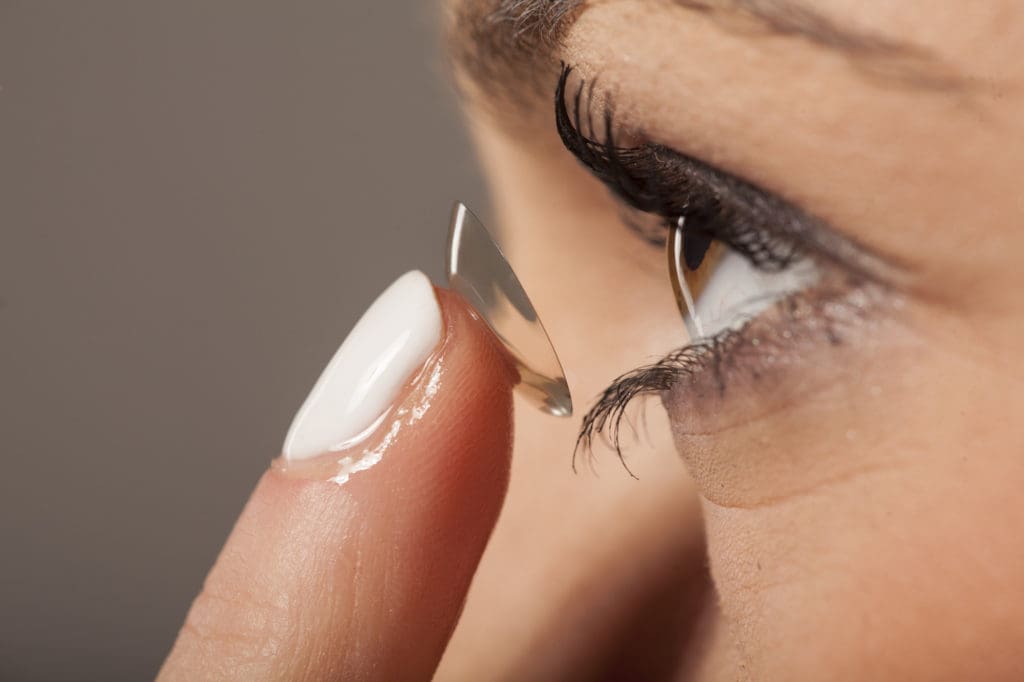
Did you know that over 2 billion people have refractive vision errors? That’s 25% of the world’s population! While glasses and contact lenses are the most common methods of correcting refractive errors, there is another option: multifocal contact lenses. Multifocal contact lenses can help with both nearsightedness and farsightedness. They correct vision at all distances, unlike monovision contact lenses, which correct for one distance only. That’s why they are such a popular choice among people with vision problems. Would you or someone you love benefit from multifocal contact lenses? Read on to learn more about multifocal contact lenses! Understanding Multifocal Contact Lenses Did you know that over 2 billion people have refractive vision errors? That’s 25% of the world’s population! While glasses and contact lenses are the most common methods of correcting refractive errors, there is another option: multifocal contact lenses. Multifocal contacts can help with both nearsightedness and farsightedness, correcting vision at all distances. Unlike monovision contact lenses, which correct for only one distance, multifocal lenses allow you to see clearly at near, intermediate, and far distances. But how do multifocal contact lenses work, and are they worth it? Let’s explore the benefits, types, and suitability of these lenses, especially for those with specific vision needs like astigmatism. What Are Multifocal Contact Lenses? Multifocal contact lenses are designed to help you see better at different distances. They correct both nearsightedness and farsightedness by incorporating multiple lens powers in a single lens. This allows for seamless transitions between varying focal points, providing clear vision across all distances. For those with astigmatism, multifocal contacts for astigmatism are available. These lenses combine the benefits of toric lenses (used to correct astigmatism) with the multifocal design, offering a tailored solution for individuals with multiple vision issues. How Do Multifocal Contact Lenses Work? So, how do multifocal contact lenses work? These lenses feature concentric rings of different prescriptions within the lens. As your eyes naturally shift between these zones, they focus light from different distances onto your retina, enabling clear vision at all ranges. This design mimics the natural accommodation of the eye, which allows it to focus on objects at varying distances. The brain quickly adapts to this visual setup, making multifocal lenses a convenient and effective solution for presbyopia and other age-related vision changes. Multifocal Contact Lens Benefits Multifocal contact lenses offer numerous benefits over traditional single-focus contact lenses. Here are some key advantages: Fewer Headaches: By correcting vision at all distances, these lenses can help reduce eye strain and headaches that often result from switching between different pairs of glasses. Convenience: Available in various options, including daily disposables, daily multifocal contact lenses offer the ultimate convenience. You can enjoy fresh lenses every day without the hassle of cleaning and storing them. Natural Vision: Multifocal lenses provide a more natural vision experience compared to single-vision lenses, as they more closely mimic how the eye naturally focuses. Ease of Use: They are easier to adjust to than traditional bifocal or trifocal glasses, making them a good choice for those new to multifocal lenses. Are Multifocal Contact Lenses Worth It? One common question is, are multifocal contact lenses worth it? The answer depends on your individual vision needs and lifestyle. For many, the convenience of having one pair of lenses that corrects vision at all distances makes them an excellent choice. They eliminate the need to switch between reading glasses and regular glasses, providing continuous clear vision throughout the day. However, they may be slightly more expensive than traditional lenses. The added cost can be justified by the benefits, especially if you lead an active lifestyle and need clear vision at varying distances. Who Can Benefit From Multifocal Contact Lenses? Multifocal contact lenses are ideal for individuals with presbyopia, a condition where the eye’s lens loses flexibility, making it difficult to focus on close objects. They are also suitable for those with astigmatism, thanks to the availability of multifocal contacts for astigmatism. These lenses are perfect for people who: Have difficulty seeing clearly at all distances Want to transition from glasses to contact lenses Need clear vision for specific activities such as reading or driving Multifocal lenses may not be suitable for everyone, especially those with certain eye conditions or who require high prescriptions. Always consult an eye doctor to determine if they are right for you. Choosing the Right Multifocal Contact Lenses for You When it comes to choosing the best multifocal contact lenses, consider the following: Consult Your Eye Doctor: Your eye doctor can recommend the best type of multifocal contacts for your specific vision problems. Discuss your lifestyle needs and vision goals to find the best fit. Lifestyle Considerations: If you lead a busy lifestyle, daily multifocal contact lenses might be the best choice. These lenses are convenient, hygienic, and eliminate the need for lens care routines. Budget: Multifocal contact lenses can be more expensive than single-focus lenses, so consider your budget when making a decision. Trial Period: Many optometrists offer trial lenses, allowing you to try out different multifocal contacts before making a final decision. FAQs About Multifocal Contact Lenses Here are some frequently asked questions about multifocal contact lenses: How much do multifocal contact lenses cost? The cost of multifocal contact lenses varies depending on the type and brand. Discuss the options with your eye doctor to find a lens that fits your budget. How long do multifocal contact lenses last? The lifespan of multifocal contact lenses depends on the type. Daily disposable lenses are meant for single use, while monthly lenses can last up to 30 days with proper care. Can I wear multifocal contact lenses all day? Yes, you can wear them all day as long as they provide the comfort and vision correction you need. Some people may need a break after several hours, depending on individual tolerance. How do I clean multifocal contact lenses? Follow the manufacturer’s instructions for cleaning. If you use daily disposables, cleaning isn’t necessary, but monthly lenses require regular cleaning
What Is an Astigmatism? Symptoms, Causes, and Treatments
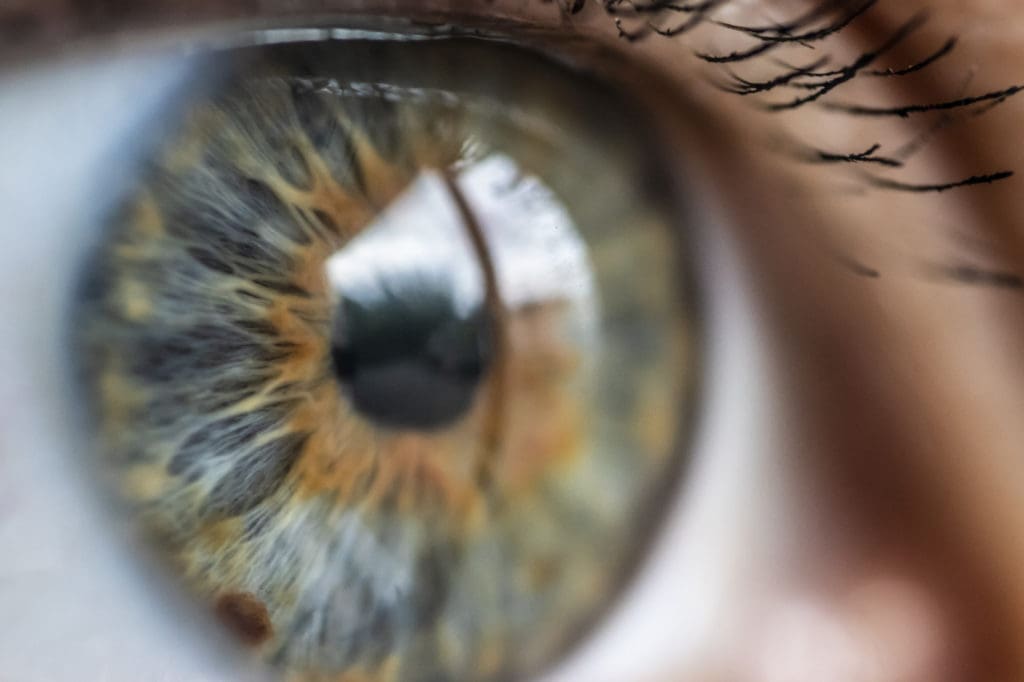
Studies show that 14 million Americans are visually impaired. Many of these people with vision problems have uncorrected impairments and could benefit from things like eyeglasses or contact lenses. However, there are many reasons why you may have blurry eyesight, so it is important that you know what is causing your vision problems. One common cause of blurry vision is astigmatism. What is an astigmatism? Keep reading this guide for everything you need to know about astigmatism and its symptoms, causes, and treatments. What Is an Astigmatism? Astigmatism is a type of refractive error, similar to nearsightedness (myopia) and farsightedness (hyperopia). It occurs when the cornea or lens of the eye has an irregular shape. In a normal eye, the cornea and lens have a smooth, spherical curvature. However, in an eye with astigmatism, the curvature is uneven, like a football or egg, causing light to focus on multiple points in the retina rather than a single point. Astigmatism vs Normal Vision: In normal vision, the cornea and lens focus light directly onto the retina, creating a clear image. With astigmatism, the irregular shape of the cornea or lens distorts light, leading to blurred vision at all distances. Astigmatism Causes The exact causes of astigmatism are not entirely understood, but it is often present at birth and is thought to be hereditary. Some common causes include: Genetics: Most cases of astigmatism are inherited. If one or both parents have astigmatism, there’s a higher likelihood that their children will also develop the condition. Eye Injury or Surgery: Trauma to the eye, such as a cut or puncture, can cause scarring of the cornea, leading to astigmatism. Eye surgeries, especially those involving the cornea, can also alter its shape and cause astigmatism. Keratoconus: This is a progressive eye disease where the cornea thins and bulges into a cone-like shape, causing severe astigmatism and vision problems. What Causes Astigmatism to Worsen: Factors such as eye strain, aging, and untreated keratoconus can worsen astigmatism over time. Additionally, excessive rubbing of the eyes and poorly fitted contact lenses can exacerbate the condition. Common Symptoms of Astigmatism Recognizing the symptoms of astigmatism is crucial for early diagnosis and treatment. Common symptoms include: Blurry or Distorted Vision: Objects may appear blurry, stretched, or wavy, regardless of distance. Astigmatism Vision: This refers to the specific way people with astigmatism perceive their surroundings, often described as seeing multiple images or experiencing ghosting. Eyestrain and Headaches: The constant effort to focus can lead to eye discomfort, fatigue, and frequent headaches. Difficulty Seeing at Night: Reduced clarity and increased sensitivity to glare make it challenging to see in low-light conditions. Squinting: To improve focus, individuals with astigmatism may squint their eyes, which can lead to further strain. If you notice these astigmatism symptoms, it’s essential to consult an eye care professional for an evaluation. How to Diagnose Astigmatism Diagnosing astigmatism involves a comprehensive eye exam that includes several specific tests: Astigmatism Test: This typically includes a visual acuity test where you read letters from a chart to measure clarity at various distances. If vision is blurred or distorted, astigmatism may be present. Keratometry: This test measures the curvature of the cornea using a keratometer, which helps to determine the extent of astigmatism. Refraction Test: Using a phoropter, your eye doctor will place a series of lenses in front of your eyes and ask you to identify which one gives you the clearest vision. This helps in determining the precise prescription needed to correct astigmatism. Topography: A corneal topography test creates a detailed map of the surface curvature of the cornea, providing precise information about its shape and irregularities. How to Treat Astigmatism There are several effective methods for correcting astigmatism: Eyeglasses: The simplest and most common way to correct astigmatism is with prescription glasses. These lenses are specially designed to compensate for the irregular shape of the cornea or lens. Contact Lenses: Specially designed contact lenses, such as Acuvue Oasys for Astigmatism, can also correct astigmatism. These lenses are toric in shape, meaning they have different powers in different meridians of the lens to correct the uneven curvature. Orthokeratology (Ortho-K): This involves wearing rigid gas-permeable contact lenses overnight to temporarily reshape the cornea. While effective, the results are temporary, and the cornea will revert to its original shape if the lenses are not worn regularly. Refractive Surgery: Procedures like LASIK, PRK, and LASEK are surgical options for how to fix astigmatism. These surgeries reshape the cornea, providing a more permanent solution to astigmatism. However, not everyone is a candidate for refractive surgery, so it’s important to consult with a specialist. Managing Astigmatism Managing astigmatism involves regular eye exams to monitor any changes in vision and adjusting treatments as needed. Wearing the correct prescription lenses and following your eye doctor’s recommendations are essential for maintaining optimal vision. Astigmatism is a common and manageable vision condition that affects millions of people worldwide. By understanding its causes, recognizing the symptoms, and seeking appropriate astigmatism treatment, you can maintain clear vision and reduce the impact of astigmatism on your daily life. Whether you choose eyeglasses, contact lenses like Acuvue Oasys for Astigmatism, or surgical options, correcting astigmatism is possible with the right care and guidance. Finally, your eye doctor may recommend refractive surgery to treat severe astigmatism. This includes LASIK, PRK, and LASEK. These surgeries can reshape your cornea to permanently correct your vision. FAQs What causes astigmatism? Astigmatism is caused by an irregularly shaped cornea or lens, which prevents light from focusing properly on the retina. It is often hereditary but can also result from eye injury, surgery, or keratoconus. What happens if you have astigmatism? If you have astigmatism, your vision may be blurry or distorted at all distances. You might also experience eyestrain, headaches, and difficulty seeing at night. How does a person with astigmatism see? A person with astigmatism sees images that are blurred, stretched, or wavy due to the uneven curvature of the cornea or lens, causing light to focus on
Contact Lenses vs. Glasses: What Are the Differences?
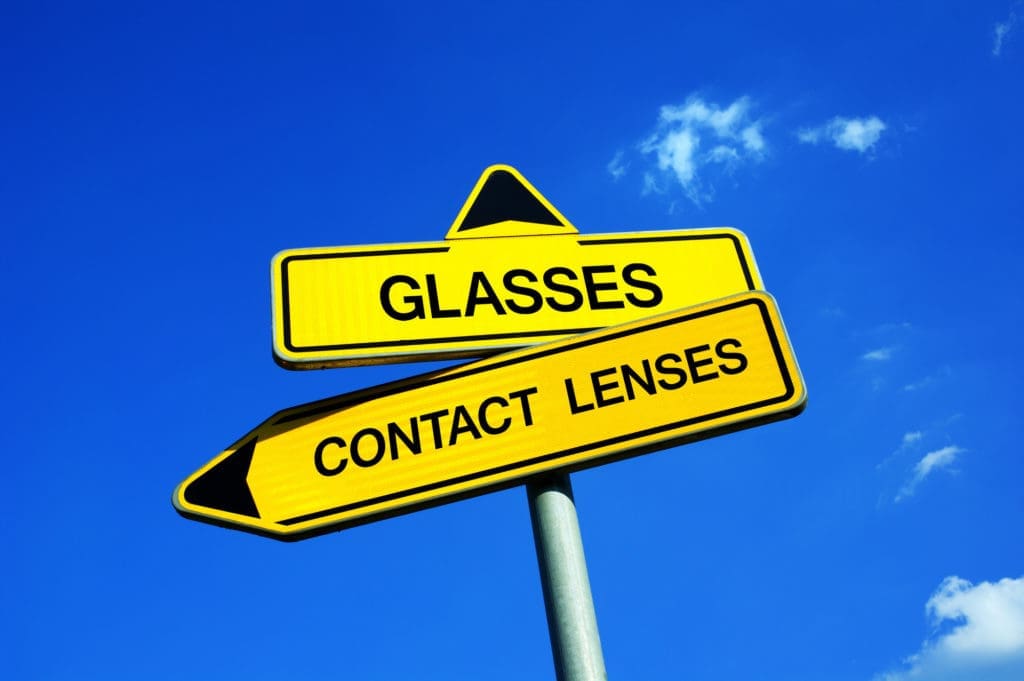
Are you trying to decide whether to get contact lenses or glasses? It might surprise you that around 93 million US adults are at risk of severe vision loss. That’s why it’s essential to weigh the key differences between the two before deciding. Once you do, you’ll have a new lease on life. Want to learn more? Keep reading to find out everything you need to know about contact lenses vs. glasses. Contact Lenses Guide What are contact lenses? Contact lenses are small, thin disks that you place directly on your eye. They correct vision the same way that glasses do but without the need for frames or arms. Contact lenses sit on the surface of your eye and stay in place by the natural moisture there. While it might take some time to adjust, many people find contact lenses more comfortable than glasses. What is the disadvantage of contact lenses? Despite their popularity, contact lenses do have some disadvantages: Risk of Infection: Improper cleaning and storage of contact lenses can lead to eye infections, such as keratitis. Eye Irritation: Prolonged wear or poor fit can cause discomfort, dryness, and irritation. Maintenance: Contact lenses require regular cleaning and care, which can be time-consuming compared to glasses. Expense: Since contact lenses need to be replaced regularly, they can be more expensive in the long run than glasses. Types of Contact Lenses Hard Contact Lenses Also known as rigid gas permeable (RGP) lenses, these lenses are made from a rigid, inflexible material. They do not conform to the shape of your eye as soft lenses do, which may require a longer adjustment period. However, they are often more durable and provide clearer vision, especially for correcting astigmatism. Toric Contact Lenses: These specialized lenses are designed to correct astigmatism by having different powers in various meridians of the lens. They offer sharper vision than regular soft lenses for those with astigmatism. Soft Contact Lenses Soft lenses are made from flexible materials that mold to the shape of your eye, making them generally more comfortable than hard lenses. They are available in daily, weekly, and monthly disposables, which you can wear for a set period before discarding. Can I Wear Normal Contact Lenses with Astigmatism? While it is possible to wear standard soft lenses with mild astigmatism, toric contact lenses are often recommended for better vision correction. Is It Safe to Wear Contact Lenses Instead of Glasses? Wearing contact lenses is generally safe when proper hygiene and care are practiced. However, they might not be suitable for everyone: Who Cannot Wear Contact Lenses? People with certain eye conditions, such as severe dry eyes, chronic allergies, or a history of frequent eye infections, may find contact lenses uncomfortable or unsafe. Additionally, those who struggle with the maintenance and care required for contact lenses might prefer glasses. Glasses Guide What are glasses? Glasses, also called eyeglasses or spectacles, are vision correction devices worn on the face. They consist of lenses mounted in a frame that sits on your nose and ears. Types of Lenses Polycarbonate: Impact-resistant and ideal for active individuals or children, these lenses also offer UV protection. Trivex: Similar to polycarbonate but with better optical clarity, these lenses are lightweight, durable, and provide excellent vision. High-Index Plastic: Thinner and lighter than standard lenses, these are perfect for those with strong prescriptions. Aspheric: Featuring a flatter curve, these lenses are thinner and offer a wider field of vision. Photochromic: These lenses darken in response to sunlight, eliminating the need to switch between regular glasses and sunglasses. Polarized Sunglasses: Designed to reduce glare, these lenses are ideal for outdoor activities but may obstruct views of certain screens. Key Differences Between Contact Lenses and Glasses Cost Contact lenses generally cost more than glasses due to the need for regular replacement and the purchase of cleaning solutions. However, both glasses and contact lenses offer affordable options depending on the materials and brands you choose. Convenience Glasses are low maintenance and can be put on or taken off easily without any special care. They also don’t require cleaning solutions or storage cases. Contact lenses, while convenient in that they don’t obstruct your vision or fog up, require daily cleaning and proper storage. For those who prefer less maintenance, daily disposable contact lenses offer a convenient solution. Aesthetics Some people prefer the look of glasses for the polished and intellectual appearance they provide. Glasses also offer a way to express personal style through different frame designs. Contact lenses, on the other hand, are nearly invisible, allowing you to maintain your natural appearance. They’re also better for activities like sports, where glasses may get in the way. Vision Clarity Do you see better with glasses than contacts? This depends on individual preferences and conditions. Some people find that glasses provide a more consistent and stable vision, especially for those with complex prescriptions. However, contacts offer a wider field of view since they move with your eye and eliminate the edge distortion sometimes experienced with glasses. Are contacts better than glasses for astigmatism? For many people with astigmatism, toric contact lenses can provide clearer and more stable vision than glasses. However, glasses remain a reliable and effective option, especially for those who prefer not to wear contacts. Switching from Glasses to Contacts Switching from glasses to contacts can be an adjustment, but it offers many benefits, including a wider field of vision, no fogging, and no interference with physical activities. If you’re considering making the switch, it’s important to consult with your eye care professional to ensure you get the right fit and type of contact lenses. FAQs What is the disadvantage of contact lenses? Contact lenses can cause eye irritation, dryness, and an increased risk of infections if not properly maintained. They also require more daily care and can be more expensive over time compared to glasses. Is it safe to wear contact lenses instead of glasses? Yes, it is generally safe to wear contact lenses instead of glasses, provided
Can You Sleep With Contacts In?

Almost one-third of contact-wearers admit to falling asleep with their contacts in. Although they are convenient and comfortable to wear during the day, contacts can feel like a nuisance before bed. When you’re already cozied up in the sheets, it can be tempting to neglect your eye care for some quick sleep. Can you sleep with contacts in? What could happen if you forget to take them out? Don’t turn a blind eye to the risks of sleeping in contacts! Read on to learn more. Can You Sleep with Contacts In? Understanding the Risks and Care Tips Many contact lens wearers have wondered, “Can you sleep with contacts in?” The short answer is no, you shouldn’t. While it may seem convenient to leave your contacts overnight, doing so significantly increases the risk of serious eye infections and other complications. How Long Can You Sleep with Contacts In? Sleeping with contacts in, even for a short nap, is not recommended. Studies show that sleeping in contacts makes you six to eight times more likely to develop an eye infection. But how long can you sleep with contacts in before it becomes dangerous? The truth is, even sleeping with contacts in for just a few hours can start to deprive your eyes of the oxygen they need, leading to discomfort, dryness, and an increased risk of infection. Dangers of Sleeping in Contacts If you sleep in your contacts, you may be risking more than just minor irritation. Here are some of the major risks: Corneal Infection: Your cornea needs oxygen and hydration to stay healthy. Sleeping with contacts reduces oxygen flow, leading to cell damage and increasing the risk of infections like keratitis. Bacterial Keratitis: This type of infection is caused by bacteria like Staphylococcus aureus and Pseudomonas aeruginosa, which thrive in the low-oxygen environment created by overnight contact lens wear. Fungal Keratitis: Common in warmer climates, this infection can result from sleeping in contacts, especially if you’ve had any eye trauma. Acanthamoeba Keratitis: This serious infection can occur if your lenses come into contact with contaminated water, such as when swimming or showering while wearing lenses. Sleeping in contacts further exacerbates the risk. How to Treat Eyes After Sleeping with Contacts If you accidentally fall asleep with your contacts in, it’s essential to treat your eyes with care immediately upon waking: Remove the Lenses: As soon as you wake up, remove your contact lenses. If your eyes feel too dry, use rewetting drops and wait a few minutes before attempting to remove them again. Rehydrate Your Eyes: After removing your contacts, use artificial tears or lubricating eye drops to restore moisture to your eyes. Switch to Glasses: Give your eyes a break by wearing glasses for at least a day to allow them to recover and rehydrate. Monitor for Signs of Infection: Watch for symptoms like redness, pain, discharge, or sensitivity to light. If any of these occur, consult an eye care professional immediately. What Happens if You Sleep with Contacts In? The consequences of sleeping with contacts can be severe: Eye Discharge Eye Pain or Swelling Itching or Burning Sensation Redness and Watery Eyes Blurry Vision Sensitivity to Light These symptoms can indicate an infection that, if left untreated, could lead to more serious conditions requiring surgical intervention and possibly resulting in vision loss. What to Do if You Fell Asleep in Contacts It’s easy to accidentally fall asleep with your contacts in. If this happens: Remove Your Contacts Immediately: Carefully take out your contacts as soon as possible. Use Rewetting Drops: To ease the removal process and rehydrate your eyes, apply rewetting drops. Rest Your Eyes: Opt for wearing glasses for the rest of the day to reduce strain on your eyes. Stay Vigilant: Over the next few days, monitor your eyes for any signs of infection. Important Care Tips for Contact Lens Wearers Proper contact lens hygiene is crucial to prevent infections and maintain eye health. Here are some essential tips: Avoid Swimming, Showering, or Hot-Tubbing in Contacts: Water can introduce harmful bacteria to your lenses. Always Wash Your Hands Before Handling Contacts: Clean hands reduce the risk of transferring bacteria to your eyes. Use Proper Cleaning Solutions: Only use contact lens solutions recommended by your eye care provider—never use saline or tap water. Replace Your Lens Case Regularly: Discard the old solution and clean your lens case daily to prevent bacteria buildup. Don’t Reuse Disposable Contact Lenses: Follow the replacement schedule provided by your eye doctor to minimize the risk of complications. Put Contacts In Before Applying Makeup: This reduces the chance of makeup particles getting trapped under your lenses. Practice Safe Shut-Eye So, can you sleep with contacts in? Technically, yes, but it’s strongly discouraged. The risks far outweigh the convenience, as even a short nap can increase your chances of developing a serious eye infection. By following proper contact lens care and avoiding sleeping in your lenses, you can protect your eyes from potential harm. Additionally, remember to schedule regular eye exams with your optometrist to ensure your eyes remain healthy and your vision sharp. The Eye Pros are here to assist with all your exam and eyewear needs at multiple locations across Utah and Idaho. Don’t hesitate to contact us if you have any questions about your eye health or need advice on the best practices for wearing contact lenses.
What Is the Difference Between Nearsighted and Farsighted?
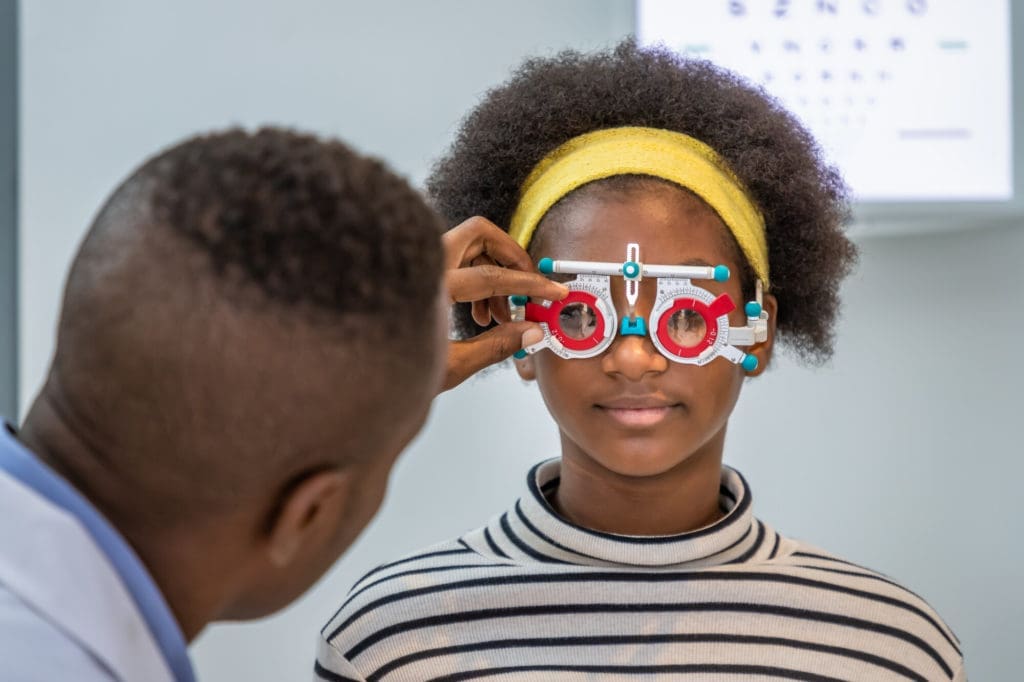
More than 40% of the United States population needs prescription glasses. It’s estimated that one-third of the world’s population’s nearsighted. It’s more common to be nearsighted than farsighted, but both can lead to further eye complications down the road. However, what’s the difference between nearsighted and farsighted? It’s not uncommon to get the two confused with one another, as many people do. Knowing the difference and understanding what makes good eye health is essential, so you know when it’s time to see your eye doctor in Utah or an eye doctor in Idaho. In the guide below, you’ll discover our guide on everything you need to know about nearsightedness, farsightedness, and when it’s time to see an eye doctor. Continue reading to learn more! What’s Nearsightedness? Nearsightedness (Myopia) is a common refractive error that affects over 150 million Americans. If you’re nearsighted, you have difficulty seeing objects that are far away. Your vision is clear when looking at things up close, but objects in the distance appear blurry. Nearsightedness occurs when the eye is too long, or the cornea is too curved. This causes light entering the eye to focus in front of the retina rather than directly on it. Common symptoms of nearsightedness include: Blurry vision when looking at distant objects Difficulty seeing while driving, especially at night Frequent headaches due to eyestrain Squinting to see clearly What’s Farsightedness? Farsightedness (Hyperopia) is another type of refractive error but is less common than nearsightedness. If you’re farsighted, you can see distant objects clearly, but close objects may appear blurry. Farsightedness occurs when the eye is too short, or the cornea is not curved enough. This causes light to focus behind the retina. Common symptoms of farsightedness include: Blurry vision when looking at close objects Eye strain and headaches, especially after reading or working on a computer Difficulty with tasks that require close focus, such as sewing or reading How Do I Know if I’m Nearsighted or Farsighted? Determining whether you’re nearsighted or farsighted typically involves noticing the challenges you face with your vision. If you struggle to see distant objects, you’re likely nearsighted. Conversely, if reading or focusing on close objects is difficult, you may be farsighted. The best way to know for sure is to take a nearsighted vs farsighted test during a comprehensive eye exam. An optometrist will assess your vision and provide a diagnosis based on your symptoms. Is Farsightedness Worse Than Nearsightedness? Neither farsightedness nor nearsightedness is inherently worse than the other; it depends on your lifestyle and the activities you engage in daily. For instance, someone who reads a lot might find farsightedness more troublesome, while someone who drives frequently might struggle more with nearsightedness. Can a Person Be Both Nearsighted and Farsighted? Yes, it is possible for a person to have both nearsightedness and farsightedness in different eyes or even in the same eye, a condition known as mixed astigmatism. This is where one part of the eye is nearsighted while another part is farsighted. Astigmatism often accompanies either condition, further complicating vision. Nearsighted vs Farsighted vs Astigmatism: A Quick Comparison Nearsightedness (Myopia): Difficulty seeing distant objects clearly; close-up vision is unaffected. Farsightedness (Hyperopia): Difficulty seeing close objects clearly; distant vision is usually sharp. Astigmatism: Blurred vision at any distance due to an irregularly shaped cornea that causes light to focus on multiple points on the retina. How to Diagnose Nearsightedness and Farsightedness If you suspect you’re dealing with a refractive error, a visit to the eye doctor is essential. The eye doctor will perform a series of tests to diagnose your condition accurately: Visual Acuity Test: This involves reading letters on a chart from a specific distance to determine how well you can see at different ranges. Refraction Assessment: Using a phoropter, the eye doctor will place different lenses in front of your eyes to find the prescription that best corrects your vision. Retinoscopy: This test measures how light reflects off your retina to determine your refractive error. Can Nearsightedness or Farsightedness Be Cured? Can nearsightedness be cured? Unfortunately, there’s no cure for nearsightedness or farsightedness. However, both conditions can be effectively managed with corrective lenses (glasses or contacts) or refractive surgery, such as LASIK. Regular eye exams are crucial for monitoring these conditions and updating prescriptions as needed. Prioritize Your Eye Health Understanding whether you are nearsighted, farsighted, or have astigmatism is crucial for maintaining optimal vision and overall eye health. Regular eye exams, proper lens care, and consulting with your eye care professional about the best options for your specific needs are essential steps in managing these conditions. Whether you choose glasses or contact lenses—or a combination of both—keeping your prescription up to date will help you maintain clear vision and prevent further eye strain. Regularly updating your glasses ensures your eyes have the best support for your vision needs. For more information or to schedule an eye exam, contact The Eye Pros, your trusted eye care provider in Idaho and Utah.
7 Signs You Need to Make an Eye Doctor Appointment
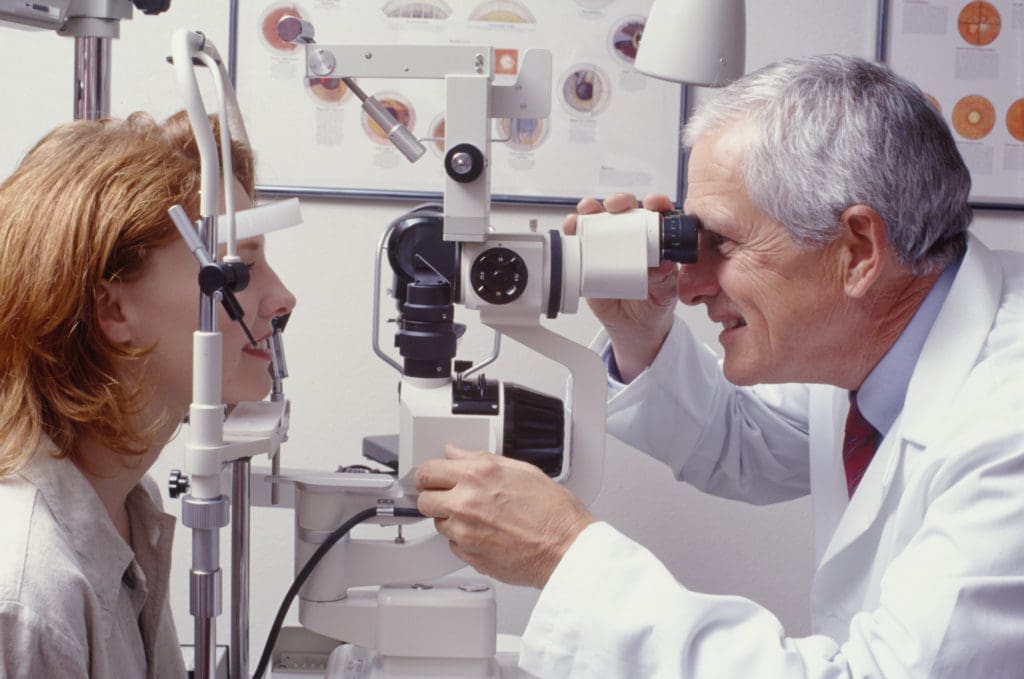
In the United States, around 93 million adults are at high risk for serious vision loss. Despite this fact, only half of them visited an eye doctor in the past 12 months. Your vision is a huge part of your life and health. Taking it for granted can lead to eye problems and complications. Left untreated, these issues can become more severe and more difficult to treat. So if you haven’t been to the optometrist lately, now is the best time to go. Here are the 7 major tell-tale signs you need to set up an eye doctor appointment and get your vision checked. 1. Your Vision Is Blurry Blurry vision is the first major sign you need to see an eye doctor. Blurriness can be a symptom of nearsightedness, farsightedness, irritation, surface eye damage, or spending too much time in front of screens. You’ll never know until you see an eye doctor who will make sure you get your vision back. If the blurriness doesn’t go away on its own, schedule an appointment right away. 2. You Have Trouble Reading From Up Close If you’re not able to read the newspaper, books, or your phone up close, you need to schedule an eye exam. Sometimes your eyes may be tired from sitting in front of a screen all day so your vision is temporarily blurry. But if this doesn’t go away on its own in a day, it might be the beginning of Presbyopia. This is a normal process of aging of the eye during which it slowly loses its ability to focus on objects in front of it. Your doctor will prescribe seeing aids so you can see great again. If you’re younger and still can’t see up close, book an eye exam immediately. Early detection is key to preventing more serious eye problems down the line. The same goes for your kids — if you notice them having trouble reading their textbooks or homework, it’s time to get their eyes checked. 3. Difficulty Seeing When Doing Daily Activities If you’re suddenly bumping into things while doing your daily activities, can’t read what’s on TV, or do any work without squinting or making mistakes, choosing an eye doctor for an exam is a priority. This is especially urgent if you work with machinery or handle heavy or sharp objects. Refusing to get checked can lead to injury either at home or at your workplace, so why risk it? When your vision negatively affects your daily life, it’s time for a checkup. Your eye doctor will examine you thoroughly and give you a treatment plan. You may need glasses, eye drops, or medication, and your life will start getting back to normal. 4. You Struggle With Eye Pressure If you feel pressure in your eyeballs or behind the eyes, this is a telltale sign something is not right with your eye health. Increased eye pressure is a symptom of glaucoma, high blood pressure, head or eye injuries, and more. Eye pressure can be extremely uncomfortable and even painful. If the symptoms are extreme, they can cause nausea, cluster headaches, throbbing pain in the eye, and blurry vision. A simple eye exam will tell you exactly what the cause is and your doctor will prescribe eye drops or medication to treat your condition. If the eye pressure is related to your lifestyle, your doctor will recommend some lifestyle and diet changes to help relieve and lower the pressure. 5. You Have Frequent Headaches Though headaches can be a symptom of a plethora of health conditions, they can also indicate an eye problem. For instance, if you spend your workday in front of a computer, your eyes will get tired. This can cause eye strain which then leads to headaches. Another cause of headaches related to eye problems is Astigmatism, which means you have blurred vision at all distances. Monocular vision is another one, which means one of your eyes does the majority of the work. High eye pressure can also cause headaches, so it’s best to schedule an eye exam to see what’s happening. Even if your doctor rules out any eye problems, at least you’ll know what to do next. You’ll do further tests to see why you have constant headaches and get to the root of the problem. 6. It’s Been a While Since You’ve Had an Eye Exam Has it been years since you last did an eye exam? Then it’s time for a new one. Even if your eyes feel okay to you, you should still schedule an appointment to make sure everything is healthy. When choosing an optometrist, go for a doctor and medical team that’ll make you feel comfortable and safe. The eyes are sensitive organs so you want to feel relaxed and taken care of at the optometrist’s office. 7. If Your Eyes Are Itchy, Red, or Constantly Irritated If your eyes are constantly irritated, itchy, yellow, or red, or you have a lot of broken blood vessels that don’t heal, you need to see an optometrist. Sometimes, irritation happens because of dust, air pollutants, or allergies but it can also be a symptom of an eye problem. An eye doctor will examine your eyes and see if there are any damages or scratches on the cornea. This is not something you can see on your own. The optometrist will use special machines and technology to examine your eyes and determine what’s causing the problem. Schedule Your Next Eye Doctor Appointment With the Eye Pros Today Whether you have blurry vision and can’t see as clearly as before or have tension in your eyes and head, an eye doctor appointment will tell you exactly what’s happening. Your eyes are your windows to the world and vision is not something you should take for granted. As soon as you notice any changes, you need to get proactive and visit an eye doctor. Find your nearest Eye Pros location and give us a call to make an appointment with us.
7 Reasons to Get Your Yearly Eye Exam
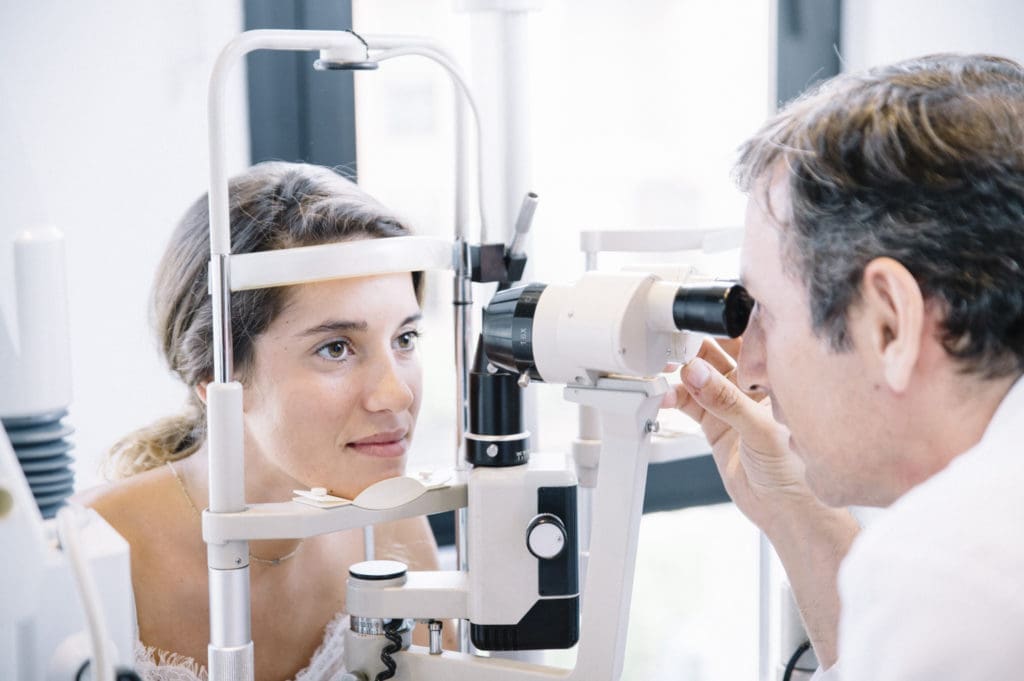
Did you know that only around one in three of us has 20/20 vision without glasses or contact lenses? If you don’t have perfect vision, the right contact lenses or prescription eyeglasses can fix that for you. Many of us will visit the eye doctor if we notice our eyesight is changing, but it’s important to schedule an annual eye checkup, well, to keep an eye on things. Read on to learn some of the most important reasons to get your yearly eye exam. 1. Keep Your Prescription Up-to-Date One of the primary reasons for an annual eye exam is to ensure your prescription for glasses or contact lenses is still accurate. Vision can change subtly over time due to age, lifestyle, or health conditions. Why is it important? Wearing an outdated prescription can cause eyestrain, headaches, and even worsen your vision. Your eye doctor will check your current prescription during the exam and make any necessary adjustments to keep your vision clear and comfortable. How often should you get your eyes checked if you wear glasses? For those who wear glasses or contact lenses, it’s recommended to have an eye exam every year to monitor changes in your prescription and ensure your vision correction is up to date, especially if you’re considering switching from glasses to contacts. 2. Detect Eye Conditions Early An eye exam isn’t just about checking your vision; it’s also about monitoring your overall eye health. Conditions like glaucoma, cataracts, and diabetic retinopathy can develop without noticeable symptoms. What tests are done during an eye exam? A comprehensive eye examination procedure includes tests for visual acuity, eye pressure, and a thorough examination of the retina. These tests help detect potential issues early before they cause significant damage. What happens if you don’t get your eyes checked? Without regular check-ups, these conditions may go undetected until they have progressed significantly, potentially leading to irreversible damage. Early detection through an annual eye exam can prevent vision loss and allow for more effective treatment options. 3. Catch Other Health Issues Early Did you know that your eye check-up can also spot signs of other diseases that aren’t directly related to the eyes? An eye examination can reveal indicators of health conditions like diabetes, high blood pressure, and even brain tumors. How? The blood vessels and nerves in your eyes are closely linked to your overall health, making your eyes a window into other potential issues. Regular eye exams can help detect these problems early, allowing for timely intervention. 4. Ensure Your Safety Having clear vision is essential for staying safe, whether you’re driving, working, or enjoying recreational activities. If your eyesight has deteriorated, it can slow your reaction times and increase your risk of accidents. Why is it crucial? Regular eye exams ensure that your vision is sharp enough for all your daily tasks, helping to keep you and those around you safe. 5. Succeed in School or Work Annual eye exams are equally important for children and adults. Poor vision can significantly impact performance in school or work, leading to difficulties in reading, writing, and focusing on tasks. Why yearly eye exams are so important: Yearly eye exams are essential for everyone. Regular exams help ensure that your vision correction is accurate, your eyes are healthy, and any early signs of eye conditions are detected and treated promptly. These exams are crucial for monitoring eye health and detecting potential issues that could affect your overall vision and well-being. 6. Update to the Latest Options Eyewear technology is constantly evolving, with new options for lenses and frames being introduced regularly. By visiting your eye doctor annually, you can stay informed about the latest advancements that may benefit your vision. What is the best time for an eye check-up? The best time for an eye check-up is typically in the morning when your eyes are well-rested. However, any time of day works as long as it fits into your schedule and ensures you don’t skip this important annual routine. 7. Prevent Vision Loss and Maintain Eye Health Regular eye exams are crucial for preventing vision loss, especially as you age. Conditions like macular degeneration, glaucoma, and cataracts can be managed effectively if caught early. How long should an eye test last? A comprehensive eye exam typically lasts about 30 minutes to an hour. This includes various tests to assess your vision and eye health, providing a thorough evaluation of your eyes. FAQs How often should you get an eye test? It’s recommended to have an eye test every year, especially if you wear glasses or contact lenses, or are over 60. Annual exams help monitor changes in vision and detect any potential eye conditions early. How long does an eyesight test last? A comprehensive eyesight test typically lasts about 30 minutes to an hour. This includes various tests to assess both your vision and overall eye health. What is the best time for an eye check-up? The best time for an eye check-up is usually in the morning when your eyes are well-rested. However, any time that fits into your schedule is fine, as long as you don’t skip the exam. How often should I change my glasses? You should change your glasses whenever your prescription changes, which is usually every 1-2 years. Regular eye exams will help determine if your prescription needs updating. Do You Really Need an Eye Test Every Year? Yes, you do. Regular eye exams are essential, even if you think your vision is fine. They help ensure that any changes in your vision are detected early, and your prescription remains up-to-date. Skipping annual exams can lead to unnoticed vision deterioration and potential eye health issues.
